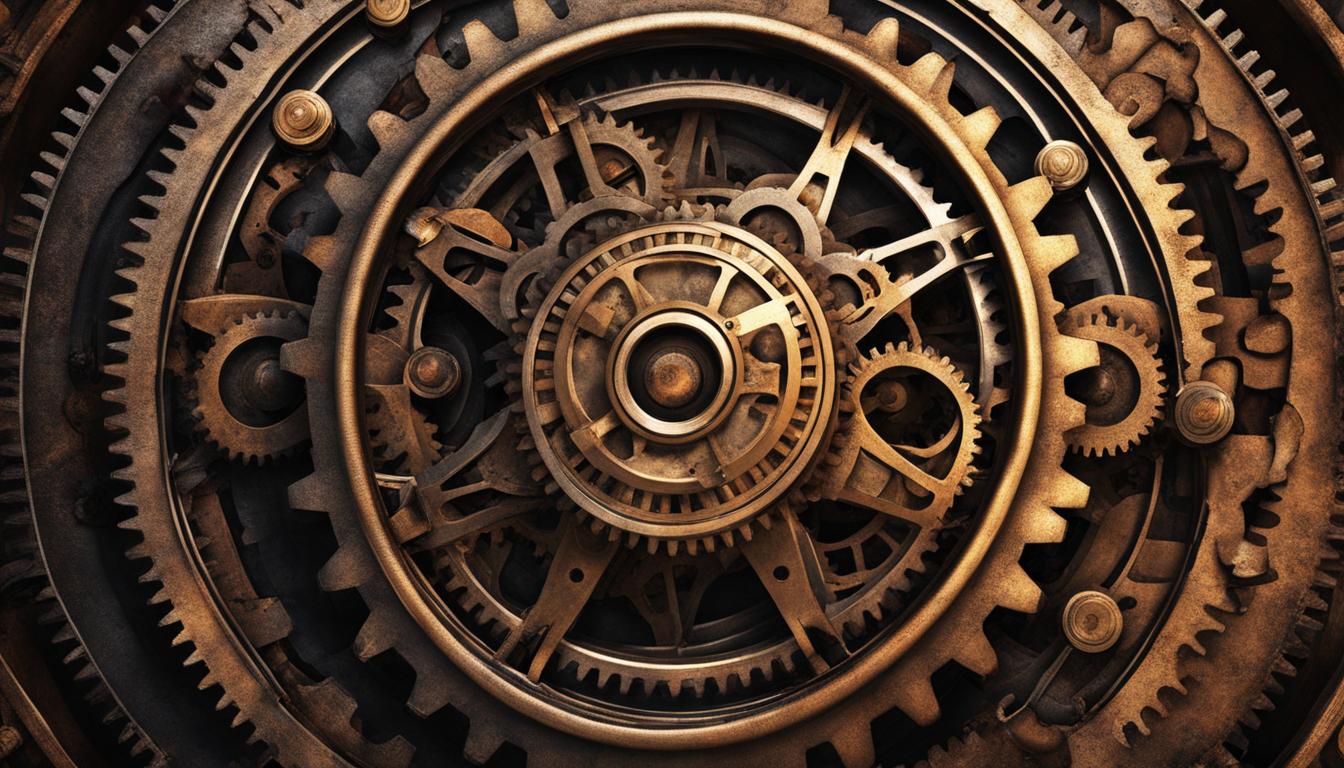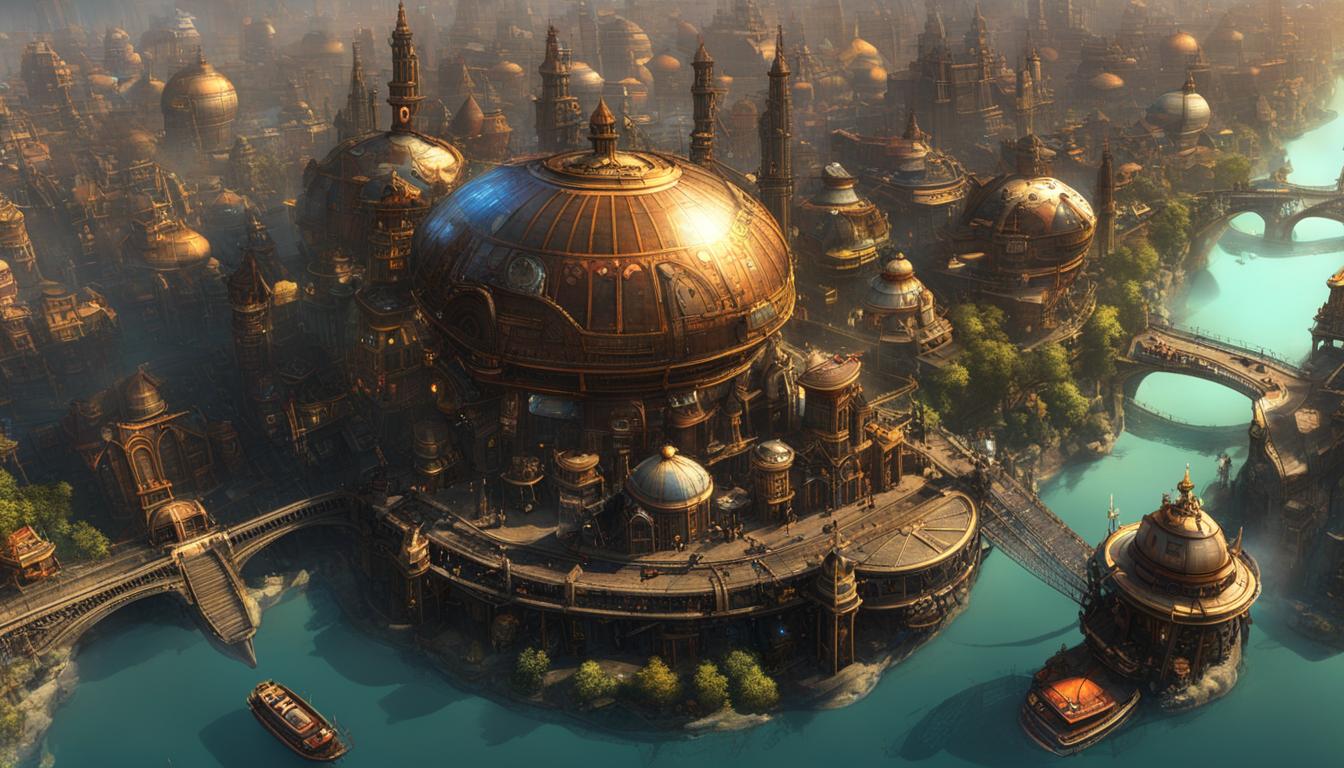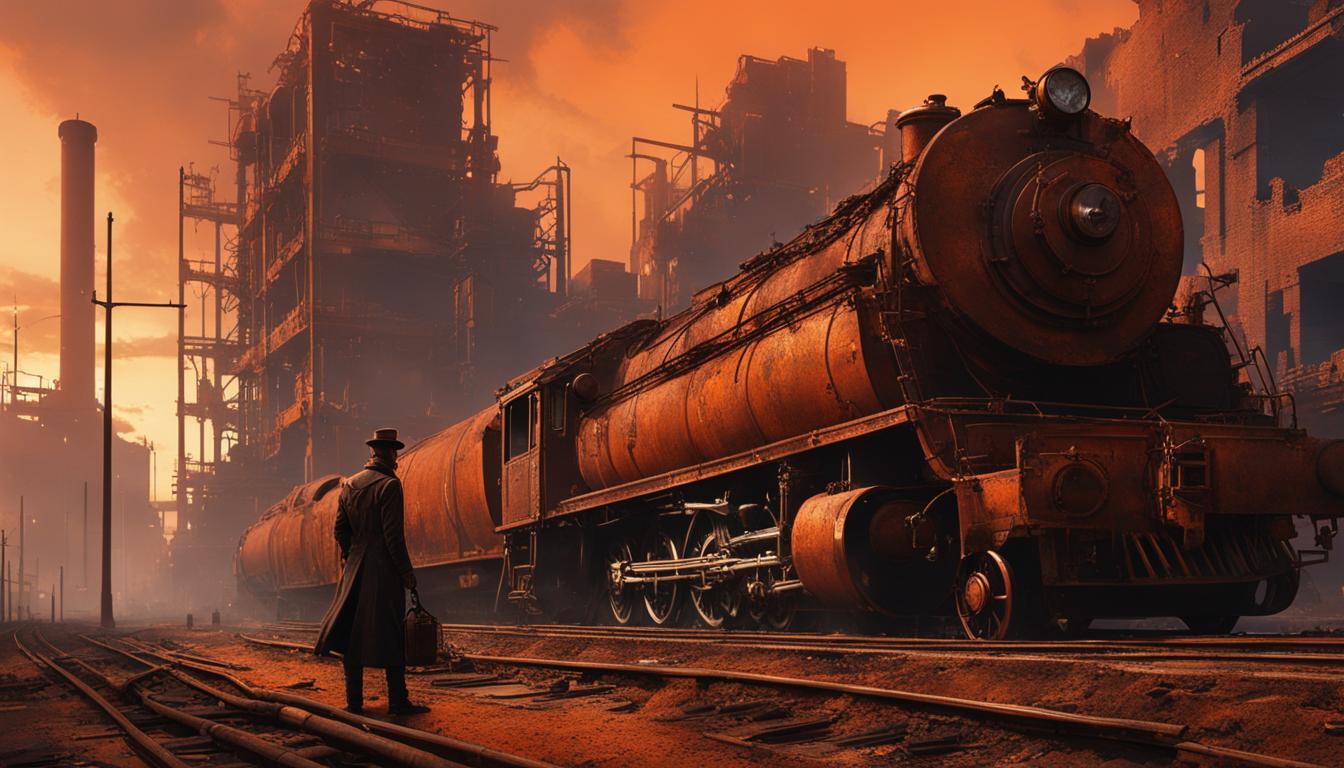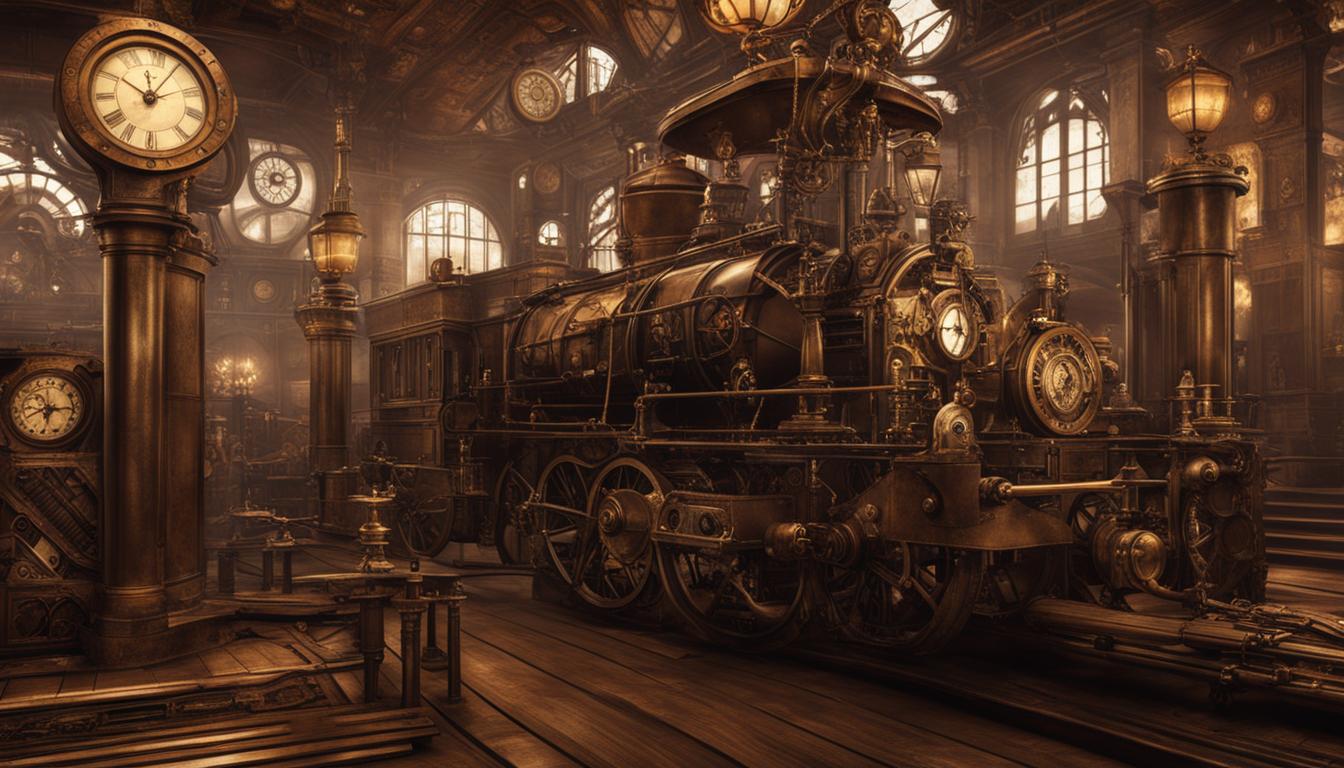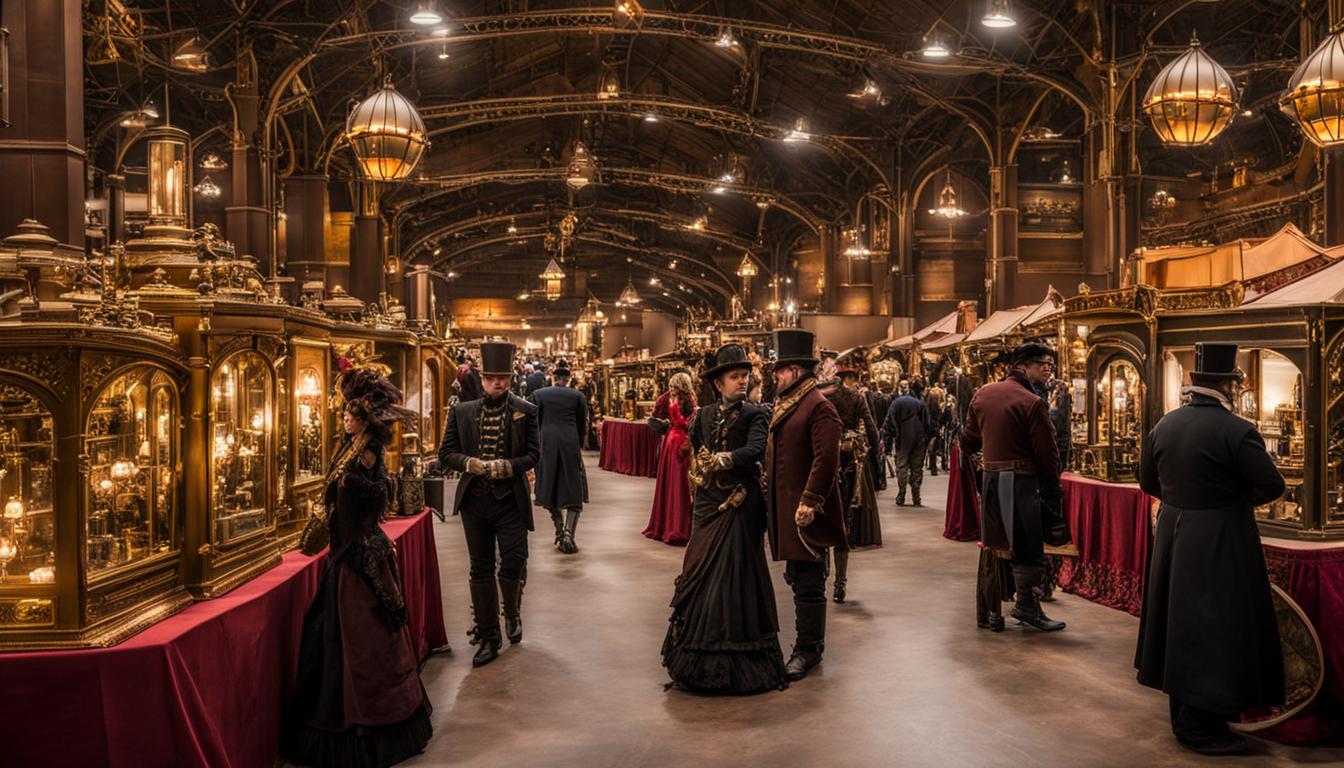Steampunk, a subgenre of science fiction rooted in the Victorian Era, has captivated audiences with its fusion of futuristic technology and retro aesthetics. With its unique storytelling style, steampunk incorporates various tropes that add depth and intrigue to the genre. From the portrayal of Victorian society to the prevalence of steam-powered machinery, these tropes shape the world-building and atmosphere of steampunk stories, creating a truly immersive experience.
Steampunk stories often draw inspiration from the Victorian Era, embracing the architecture, art, and societal norms of the time. Characters dress in a blend of Victorian fashion and steampunk flair, with gears and brass accents adorning their clothing. The influence of Victorian society extends beyond fashion, exploring the expectations placed on women and the societal pressures that shape their lives.
The gentleman and lady adventurer archetypes are staples of steampunk storytelling. Gentleman adventurers, usually from high status, fund and plan their explorations, often viewed as eccentric outcasts. Lady adventurers defy social norms by engaging in adventures typically deemed “unladylike,” showcasing strength and self-sufficiency while facing judgment from their peers.
The unmistakable steampunk aesthetic is characterized by the ubiquitous presence of brass and cogs in technology. Gears and clockwork serve both functional and decorative purposes, adorning equipment and automatons alike. This fusion of advanced and ornate machinery sets the steampunk world apart.
Steampunk stories often revolve around the concept of steam supremacy, where steam-powered technology dominates everyday life. Even traditionally non-steam technologies, such as guns and clocks, are reimagined to operate using steam. Additionally, steampunk incorporates magitech, blending technology and magic to create mechanical golems, otherworldly crystals, and spells that manipulate technology.
Key Takeaways:
- Steampunk combines futuristic technology with Victorian Era aesthetics.
- Tropes like Victorian society, gentleman and lady adventurers, and brass and cogs define the steampunk genre.
- Steampunk storytelling often explores societal pressures and challenges traditional gender roles.
- Steam supremacy and magitech add depth and complexity to steampunk world-building.
- The fusion of science, magic, and adventure creates a unique reading/viewing experience.
Victorian Era Society
Steampunk storytelling often takes inspiration from the Victorian Era, immersing readers and viewers in a world that reflects the culture, architecture, and societal norms of that time. The fashion in steampunk is a blend of Victorian styles with added steampunk elements, such as gears and brass. Characters in steampunk stories can be seen wearing elaborate outfits adorned with these accessories, along with period pieces like goggles and parasols. Gail Carriger, a notable steampunk author, has masterfully captured the essence of Victorian society in her works, exploring the expectations placed on women and the societal pressures that shape their lives.
Victorian society was known for its strict codes of conduct and rigid social hierarchies. Steampunk stories often highlight these aspects, portraying characters who either conform to societal expectations or challenge them. Throughout the genre, readers are introduced to characters from all walks of Victorian life, from aristocrats to working-class individuals, each navigating the complexities of their social standing within a steampunk world.
“In the midst of a Victorian-inspired world, steampunk storytelling delves into the intricacies of social class, providing readers with a glimpse into the societal expectations and pressures that shape the characters’ lives.”
Steampunk Fashion: An Ode to Victorian Culture
Steampunk fashion is a visual representation of the blending of past and future. Victorian garments serve as a foundation, with steampunk accents added to create a unique aesthetic. Goggles, top hats, corsets, and waistcoats are all common elements of steampunk attire. These fashion choices not only pay homage to the Victorian Era but also serve a functional purpose within the steampunk world. Goggles, for example, protect the wearer’s eyes from steam and smoke, while corsets provide stability for adventurers embarking on their daring quests.
The incorporation of Victorian fashion in steampunk storytelling adds depth to the characters and the world in which they exist. It allows readers to be transported to a bygone era while simultaneously embracing the futuristic elements that define the genre.
| Victorian Fashion Elements | Steampunk Accents |
|---|---|
| Gowns and suits | Adorned with gears and brass |
| Bustles and corsets | Functional support for adventurers |
| Top hats and bowlers | Accessorized with goggles or communication devices |
| Parasols and walking canes | Doubling as weapons or tools |
Exploring Victorian Society in Steampunk
Steampunk storytelling presents an opportunity to delve into the intricacies of Victorian society, which was marked by strict codes of behavior and societal roles. It allows readers to witness the challenges faced by individuals who either conform to these expectations or rebel against them.
The portrayal of Victorian society in steampunk is not limited to the upper classes; it also explores the lives of working-class characters who face their own unique struggles. By including a diverse range of social backgrounds, steampunk storytelling provides a more holistic view of Victorian society and allows readers to engage with characters from various walks of life.
Gentleman or Lady Adventurer
In the world of steampunk storytelling, the archetypes of the gentleman and lady adventurer shine brightly. These characters embody the spirit of exploration and adventure, challenging societal norms and breaking free from the constraints of their time. The gentleman adventurer, often hailing from a high social status, uses his wealth and education to embark on thrilling escapades. With their eccentricities and unconventional pursuits, they stand out as mavericks in their society.
On the other hand, the lady adventurer defies expectations and societal limitations by engaging in daring and “unladylike” activities. These strong-willed and self-sufficient women refuse to conform to the traditional role assigned to them, becoming inspirations for readers and viewers alike. They navigate the challenges and judgments of their peers, proving that gender should not restrict one’s sense of adventure or ability to explore the unknown.
The gentleman and lady adventurer archetypes often blend with the swashbuckler character trope, adding a touch of combat prowess and acrobatic skills to their repertoire. These adventurous heroes can hold their own in a fight, further enhancing their appeal to audiences seeking action-packed narratives. Whether it’s a daring heist or a high-flying duel, the gentleman and lady adventurers captivate with their charisma, resourcefulness, and unwavering determination.

The presence of these archetypes in steampunk storytelling adds depth and intrigue to the narrative. They serve as symbols of rebellion against society’s constraints and inspire readers and viewers to embrace their own sense of adventure. With their dashing outfits and intrepid spirits, the gentleman and lady adventurer bring a touch of excitement and mystery to the steampunk genre, leaving audiences eagerly awaiting their next escapade.
Brass and Cogs Everywhere
One of the defining features of steampunk storytelling is the prevalence of brass and cogs in the aesthetic. The combination of futuristic technology with the aesthetics of the past, particularly the Victorian Era, is showcased through the intricate and decorative use of gears and clockwork in nearly every piece of technology. This not only serves as functional machinery but also adds a visually striking element to the world-building of steampunk stories.
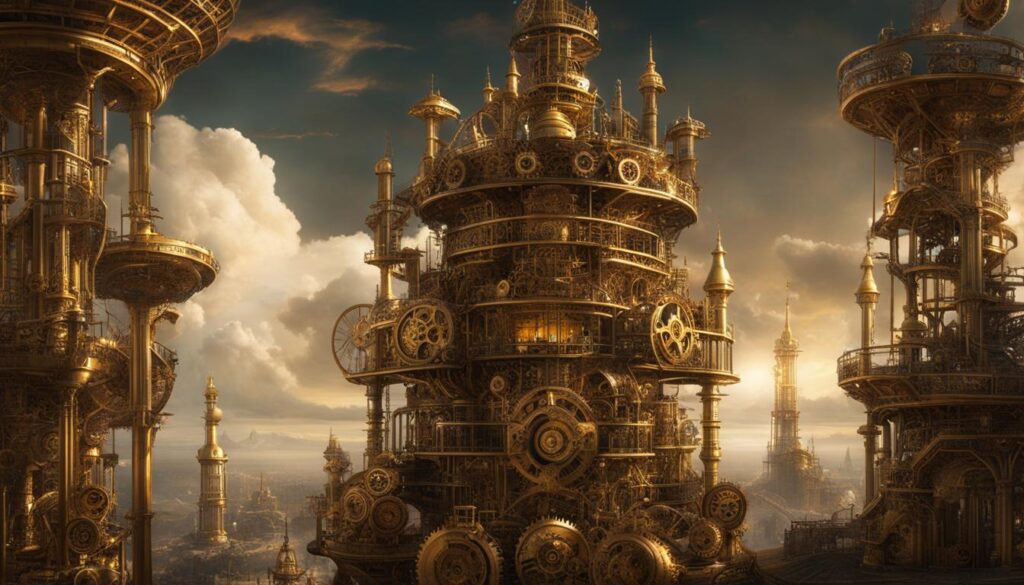
The presence of brass and cogs is not limited to the technology alone. Steampunk fashion also incorporates these elements, with characters often donning clothes adorned with gears and other steampunk accents. Accessories like goggles and parasols further enhance the steampunk aesthetic. This attention to detail in both technology and fashion creates a rich and immersive world for readers and viewers to explore.
Authors like China Miéville and Scott Westerfeld have masterfully incorporated the use of brass and cogs in their steampunk works. In Miéville’s “Perdido Street Station,” the city of New Crobuzon is brought to life through its steam-powered factories and intricate machinery, while Westerfeld’s “Leviathan” series showcases a world where steampunk technology is used not only for transportation but also for warfare.
The Role of Brass and Cogs in Steampunk Storytelling
The use of brass and cogs in steampunk storytelling serves multiple purposes. On one hand, it pays homage to the technological advancements of the Industrial Revolution and the era it represents. On the other hand, it creates a distinct and unique aesthetic that sets the world of steampunk apart from other subgenres of science fiction.
“The clank and grind of the steampunk aesthetic adds a sense of tangible realism to the narrative, grounding it in a world that is both familiar and fantastical.” – Jane Austen, Steampunk Enthusiast
By incorporating brass and cogs into their works, authors and creators are able to instantly transport audiences to a world where advanced machinery is powered by steam and governed by the intricacies of clockwork. This attention to detail adds depth and nuance to the storytelling, immersing readers and viewers in a steampunk experience like no other.
| Benefits of Brass and Cogs in Steampunk Storytelling | Examples |
|---|---|
| Enhances world-building | China Miéville’s “Perdido Street Station” |
| Adds visual appeal | Scott Westerfeld’s “Leviathan” series |
| Creates a unique aesthetic | Jeff VanderMeer’s “City of Saints and Madmen” |
Steam Supremacy and Magitech
In the vibrant world of steampunk storytelling, one concept reigns supreme: steam. Steam-powered technologies dominate everyday life, creating a unique energy source that shapes the society and technology of steampunk worlds. But it doesn’t stop there. Even traditionally non-steam reliant technologies, like guns and clocks, are ingeniously redesigned to operate using the power of steam. It’s a testament to the ingenuity of steampunk creators and the allure of this retrofuturistic genre.
But steam isn’t the only force driving the fantastical machinery of steampunk. Magitech, a fascinating fusion of technology and magic, adds an extra layer of complexity to these compelling stories. Mechanical golems, otherworldly crystals, and the artful manipulation of technology through magic seamlessly coexist in the vivid landscapes of steampunk worlds. It’s a delightful blend of the mechanical and the mystical, offering endless possibilities for adventure and discovery.
Notorious for its magitech systems and imaginative integration of magic into everyday technology, the Discworld series by Terry Pratchett stands as a shining example of steampunk storytelling at its finest. From a city powered by the magical properties of a gigantic turtle to a steam-powered publishing industry, the vivid imagination of Pratchett transports readers to a world where steam supremacy and magitech are at the heart of it all.
FAQ
What is steampunk?
Steampunk is a subgenre of science fiction that combines futuristic technology with the aesthetics of the past, particularly the Victorian Era.
What are some popular steampunk tropes?
Some popular steampunk tropes include the portrayal of Victorian Era society, the archetype of the gentleman or lady adventurer, the prevalent use of brass and cogs in technology, the presence of mad scientists, the focus on steam supremacy, the integration of magitech, the prominence of airships, and the exploration of the sky as an ocean.
How does steampunk draw inspiration from the Victorian Era?
Steampunk incorporates elements of Victorian culture, such as architecture, art, and societal norms. The fashion in steampunk is heavily influenced by Victorian society, with characters often wearing clothes that combine Victorian styles with steampunk accents like gears and brass.
What are the gentleman and lady adventurer tropes in steampunk?
Gentleman adventurers are individuals from high status who use their wealth and education to finance and plan their explorations. Lady adventurers challenge societal expectations by engaging in “unladylike” activities and are strong-willed and self-sufficient.
How does the steampunk aesthetic incorporate brass and cogs?
The steampunk aesthetic is characterized by the presence of brass and cogs in technology. Almost every piece of technology in steampunk stories is made with these elements, reflecting the genre’s focus on combining advanced and decorative machinery.
What is steam supremacy and magitech in steampunk?
Steam supremacy in steampunk stories revolves around the concept of steam-powered technologies dominating everyday life. Magitech is a fusion of technology and magic, where mechanical golems, otherworldly crystals, and the manipulation of technology through magic are common elements of steampunk worlds.

